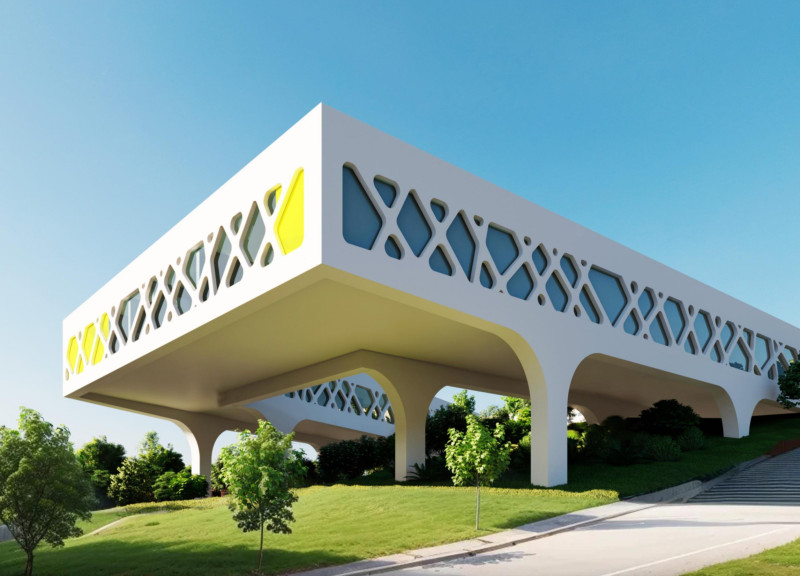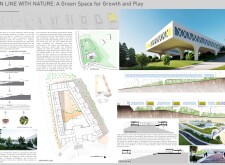5 key facts about this project
**Overview**
Located within an urban environment, the project "In Line with Nature" redefines educational facilities by creating a nursery-kindergarten that harmonizes with the surrounding natural landscape. The design seeks to foster a conducive learning atmosphere for children while emphasizing sustainability and engaging with environmental stewardship as a core principle. By integrating green spaces into the educational framework, the project aims to enhance growth, creativity, and outdoor interaction.
**Spatial Strategy and User Experience**
The architectural layout features an elevated design that provides panoramic views of adjacent greenery, enhancing visual connection to nature. Classrooms are spacious and filled with natural light, promoting an inviting environment for young learners. Flexible furnishings within these spaces encourage collaboration and foster social interaction. Additionally, the inclusion of outdoor play areas throughout the site supports physical activity and teamwork, with various installations designed to stimulate problem-solving and creativity among children.
**Materiality and Sustainability Initiatives**
The selection of materials reflects a commitment to environmental responsibility. Reinforced concrete provides structural integrity while supporting green initiatives, while extensive use of glass panels maximizes natural light and minimizes reliance on artificial illumination. Vegetated roofs contribute to urban agriculture and improve thermal efficiency. Sustainable features include passive solar technology for energy efficiency and rainwater harvesting systems for irrigation, further demonstrating a proactive approach to resource management and ecological impact. The integration of native plant landscaping enriches biodiversity and promotes low-maintenance greenery, aligning with the project’s overarching sustainability goals.



















































